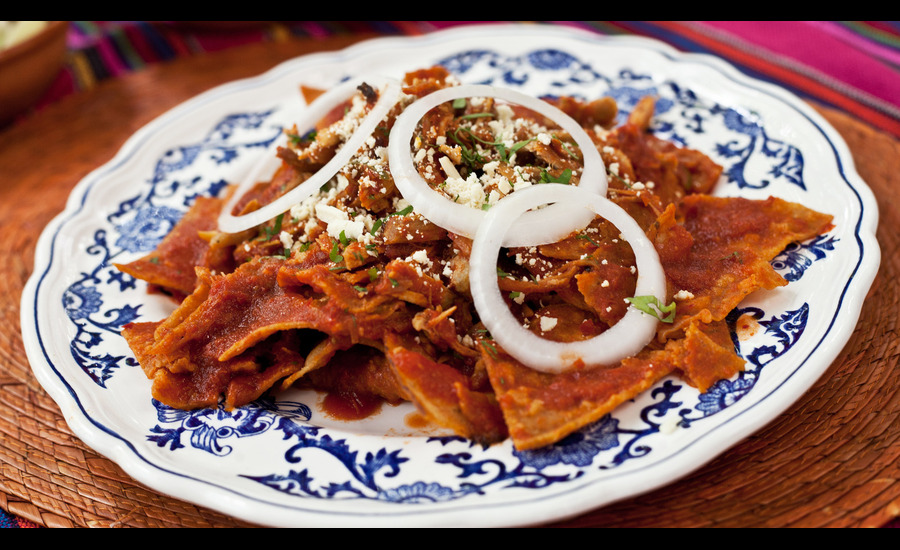Celebrating Chilaquiles: A Taste of Mexican Tradition
Mexican cuisine is a tapestry of flavors, colors, and textures, woven together by centuries of history, cultural exchange, and the rich diversity of its people. Among the vast array of dishes that define this culinary heritage, Celebrating Chilaquiles stand out as a symbol of tradition, comfort, and the ingenuity of Mexican cooking. A humble yet flavorful dish, chilaquiles have evolved from a simple way to repurpose leftovers into a beloved staple of Mexican kitchens and a source of pride for those who cherish their cultural roots. This article explores the history, cultural significance, and regional variations of chilaquiles, delving into the ingredients and techniques that make this dish a quintessential part of Mexican cuisine.
The Origins of Chilaquiles: A Journey Through Time
The origins of chilaquiles can be traced back to pre-Columbian times, long before the arrival of Spanish conquistadors on the shores of what is now Mexico. The word chilaquiles is derived from the Nahuatl word “chīlāquilitl,” which roughly translates to “chili-soaked” or “chili-covered.” This etymology provides a clue to the dish’s origins, suggesting that chilaquiles were likely a way for indigenous peoples to use stale tortillas by softening them in a flavorful sauce, typically made from chilies. In a time when every ingredient was precious, and waste was unthinkable, chilaquiles were a practical and delicious solution for extending the life of food.
As the Spanish colonized Mexico and introduced new ingredients such as cheese, chicken, and other meats, chilaquiles began to evolve. The dish became more complex, incorporating a wider variety of flavors and textures while remaining true to its humble beginnings. Chilaquiles also took on regional characteristics, with different parts of Mexico developing their own unique versions of the dish. Over time, chilaquiles transitioned from a simple peasant meal to a beloved comfort food, enjoyed by people from all walks of life.

Chilaquiles in Mexican Culture: More Than Just a Dish
Chilaquiles hold a special place in Mexican culture, embodying the values of resourcefulness, community, and tradition. In many Mexican households, chilaquiles are often prepared for breakfast or brunch, providing a hearty and satisfying meal to start the day. The dish is also a popular choice for family gatherings, where it is served as a communal dish that brings people together around the table. In this way, chilaquiles serve as a reminder of the importance of family and community in Mexican culture.
Beyond the home, Celebrating Chilaquiles have become a staple of Mexican street food, where they are often sold by vendors at markets, food stalls, and street corners. These street vendors play a vital role in preserving and promoting traditional Mexican cuisine, offering chilaquiles to locals and tourists alike. For many, the experience of eating chilaquiles from a street vendor is an integral part of their culinary journey through Mexico, providing a taste of authentic Mexican flavors in their most unpretentious form.
Chilaquiles have also made their way into the menus of Mexican restaurants around the world, where they are often featured as a signature dish. In these settings, chilaquiles are presented with a level of sophistication that elevates them from their humble origins while still honoring their traditional roots. Whether served in a high-end restaurant or a modest street stall, chilaquiles continue to be a beloved dish that resonates with people of all backgrounds.
The Essential Ingredients: Crafting the Perfect Chilaquiles
The beauty of chilaquiles lies in their simplicity. The dish is traditionally made with just a few basic ingredients: tortillas, sauce, and toppings. However, it is the quality of these ingredients and the care with which they are prepared that make chilaquiles truly exceptional.
1. Tortillas: The Foundation of the Dish
At the heart of chilaquiles are tortillas, specifically corn tortillas, which are a staple of Mexican cuisine. In many traditional recipes, the tortillas are cut into quarters or strips and then lightly fried until they are crispy. This step is crucial, as it gives the tortillas the texture needed to stand up to the sauce without becoming overly soggy. Some variations of chilaquiles call for baking or toasting the tortillas instead of frying them, offering a lighter alternative while still preserving the essential texture.
2. The Sauce: A Symphony of Flavors
The sauce is what gives chilaquiles their signature flavor, and there are many different types of sauces that can be used depending on regional preferences and personal taste. The two most common types of sauces are red and green, made from either red or green chilies, respectively. Red chilaquiles, or “chilaquiles rojos,” are typically made with a sauce based on tomatoes and dried red chilies such as guajillo or ancho. The result is a rich, smoky sauce with a deep, complex flavor. Green chilaquiles, or “chilaquiles verdes,” are made with a sauce of tomatillos and fresh green chilies like serrano or jalapeño, offering a tangy and slightly spicy flavor profile.
In addition to the red and green sauces, there are other variations, such as chilaquiles with mole sauce, a rich, chocolatey sauce with a blend of spices, or chilaquiles with salsa macha, a spicy and nutty sauce made from dried chilies, garlic, and seeds. The choice of sauce is often dictated by regional preferences, family traditions, or simply what ingredients are on hand.
3. Toppings: Adding Texture and Flavor
The toppings used in chilaquiles are just as important as the tortillas and sauce, adding layers of texture, flavor, and visual appeal to the dish. Traditional toppings include crumbled queso fresco or cotija cheese, which adds a salty, tangy flavor that complements the richness of the sauce. A dollop of crema, a type of Mexican sour cream, adds a creamy, cooling element that balances the heat of the chilies. Chopped onions and cilantro provide a fresh, herbal note, while avocado slices add a touch of creaminess and richness. Some variations of Celebrating Chilaquiles also include a fried egg or shredded chicken, making the dish even heartier and more satisfying.
Regional Variations: A Culinary Tour of Mexico
One of the most fascinating aspects of chilaquiles is the way the dish varies from region to region, reflecting the diversity of Mexican cuisine. Each region of Mexico has its own unique take on chilaquiles, influenced by local ingredients, culinary traditions, and cultural practices.
In central Mexico, chilaquiles are often made with a red sauce and are topped with a variety of ingredients, including shredded chicken, fried eggs, and even beans. This version of chilaquiles is known for its bold, robust flavors, with the sauce taking center stage. In contrast, in the state of Veracruz on the Gulf Coast, chilaquiles are typically made with a green sauce and are served with seafood such as shrimp or crab, reflecting the region’s coastal cuisine.
In Oaxaca, a region known for its rich culinary heritage, chilaquiles are often made with mole sauce, a complex and flavorful sauce made from a blend of chilies, spices, and chocolate. This version of chilaquiles is particularly indulgent, with the mole sauce adding a depth of flavor that is both sweet and savory. In the northern states of Mexico, where wheat tortillas are more common, chilaquiles are sometimes made with flour tortillas instead of corn, resulting in a dish with a slightly different texture and flavor.
Each regional variation of chilaquiles offers a unique perspective on the dish, showcasing the creativity and resourcefulness of Mexican cooks. Whether made with red or green sauce, corn or flour tortillas, chilaquiles are a versatile dish that can be adapted to suit a wide range of tastes and preferences.
The Art of Making Chilaquiles: Techniques and Tips
While chilaquiles may seem like a simple dish, there is an art to making them that requires attention to detail and a deep understanding of the ingredients and techniques involved. The key to making great chilaquiles lies in achieving the perfect balance between the crispy tortillas and the flavorful sauce. This balance is what sets chilaquiles apart from other similar dishes, such as nachos or enchiladas, and is what makes them so satisfying to eat.
One of the most important steps in making chilaquiles is frying the tortillas until they are crispy. This step is crucial, as it gives the tortillas the texture needed to stand up to the sauce without becoming overly soggy. When frying the tortillas, it is important to use oil that is hot enough to crisp the tortillas quickly without burning them. The tortillas should be fried in small batches to ensure that they cook evenly and retain their crispness.
Once the tortillas are fried, they are added to the sauce and cooked just long enough for them to absorb some of the flavors of the sauce while still retaining some of their crispness. This step requires careful attention, as overcooking the tortillas can result in a dish that is too soggy. The sauce should be added gradually, allowing the tortillas to soak up the sauce without becoming overwhelmed.
Finally, the toppings are added, providing the finishing touches that elevate the dish to new heights. The choice of toppings is a matter of personal preference, but it is important to choose toppings that complement the flavors of the sauce and tortillas. Whether it is crumbled cheese, crema, chopped onions, or fresh herbs, each topping should add a layer of flavor and texture that enhances the overall dish.
Chilaquiles Beyond Breakfast: A Versatile Dish for Any Time of Day
While chilaquiles are traditionally served as a breakfast or brunch dish, their versatility makes them suitable for any time of day. In fact, chilaquiles are often enjoyed as a hearty lunch or dinner, especially when served with additional protein such as chicken, beef, or eggs. The dish can also be made in larger quantities and served as a main course for a family meal or gathering.
One of the reasons for the popularity of chilaquiles is their adaptability. The dish can be made with a wide variety of ingredients, allowing for endless variations that cater to different tastes and dietary preferences. For example, chilaquiles can be made with a vegetarian sauce and topped with vegetables or tofu for a plant-based version of the dish. Alternatively, chilaquiles can be made with a rich, meaty sauce and topped with shredded beef or pork for a more indulgent meal.
Chilaquiles can also be customized to suit different levels of spiciness. For those who prefer a milder dish, the sauce can be made with mild chilies and a larger proportion of tomatoes or tomatillos. For those who enjoy a spicier dish, the sauce can be made with hotter chilies, such as serrano or habanero, and a touch of chipotle for a smoky kick.
The versatility of chilaquiles extends to the way they are served. While they are often served as a standalone dish, chilaquiles can also be paired with other Mexican dishes to create a more elaborate meal. For example, chilaquiles can be served alongside refried beans, rice, or a fresh salad for a well-rounded meal. They can also be served as a side dish to accompany grilled meats or seafood, adding a burst of flavor and texture to the plate.

The Global Appeal of Chilaquiles: A Mexican Dish That Crosses Borders
In recent years, chilaquiles have gained popularity beyond the borders of Mexico, finding their way into the hearts and kitchens of people around the world. This global appeal can be attributed to the dish’s delicious flavors, versatility, and the growing interest in authentic Mexican cuisine.
In the United States, Celebrating Chilaquiles have become a popular dish in Mexican and Tex-Mex restaurants, where they are often featured on brunch menus alongside other Mexican favorites like huevos rancheros and tacos. The dish has also become a favorite among home cooks, who appreciate its simplicity and the opportunity to experiment with different ingredients and flavors. Chilaquiles have even inspired variations that incorporate local ingredients and flavors, resulting in fusion dishes that blend Mexican and American culinary traditions.
In Europe, chilaquiles have also started to make an appearance in Mexican restaurants and food trucks, where they are often served as a street food or a casual dining option. The dish has been embraced by food enthusiasts who appreciate its bold flavors and the way it showcases the richness of Mexican cuisine. In cities like London, Paris, and Berlin, chilaquiles have become a trendy dish, enjoyed by those who seek out authentic and flavorful foods from around the world.
The global appeal of chilaquiles is a testament to the universal appeal of Mexican cuisine, which continues to captivate people with its vibrant flavors, rich history, and cultural significance. As chilaquiles continue to gain recognition around the world, they serve as a reminder of the enduring power of food to bring people together and celebrate cultural heritage.
Chilaquiles and Health: A Nutritious and Balanced Meal
In addition to their delicious flavors and cultural significance, chilaquiles also offer a range of nutritional benefits, making them a balanced and wholesome meal. The dish is rich in complex carbohydrates, protein, and healthy fats, providing sustained energy and nourishment.
The tortillas used in chilaquiles are made from corn, a whole grain that is high in fiber, vitamins, and minerals. Corn tortillas are also naturally gluten-free, making chilaquiles a suitable option for those with gluten sensitivities or celiac disease. The sauce, whether made from tomatoes, tomatillos, or chilies, is rich in antioxidants, vitamins, and phytonutrients that support overall health. The chilies used in the sauce are particularly high in vitamin C and capsaicin, a compound that has been shown to have anti-inflammatory and metabolism-boosting properties.
The toppings used in chilaquiles also contribute to the dish’s nutritional profile. Cheese provides a good source of calcium and protein, while avocado adds healthy monounsaturated fats that support heart health. Crema, while rich and creamy, can be used in moderation to add flavor and texture without overwhelming the dish with calories or fat. Fresh herbs like cilantro and onions add a burst of flavor while also providing vitamins, minerals, and antioxidants.
For those who are mindful of their dietary intake, chilaquiles can be made with lighter ingredients and cooking methods to create a healthier version of the dish. For example, the tortillas can be baked or toasted instead of fried, reducing the amount of oil and fat in the dish. The sauce can be made with fresh, whole ingredients and minimal added salt or sugar, preserving the natural flavors of the chilies and tomatoes. Toppings can be chosen with care, focusing on fresh, nutrient-dense ingredients that enhance the dish’s flavor and nutritional value.
The Future of Chilaquiles: A Dish That Continues to Evolve
As Mexican cuisine continues to evolve and gain recognition on the global stage, chilaquiles are poised to remain a beloved and iconic dish that embodies the essence of Mexican culinary tradition. The dish’s adaptability and versatility ensure that it will continue to be enjoyed by future generations, both in Mexico and around the world.
In Mexico, chilaquiles will continue to be a staple of home cooking, street food, and restaurant menus, reflecting the diverse regional flavors and culinary traditions of the country. As new ingredients and techniques are introduced, chilaquiles will likely continue to evolve, incorporating elements from other cuisines while remaining true to their roots.
Globally, Celebrating Chilaquiles will continue to captivate food enthusiasts and home cooks who seek out authentic and flavorful dishes that celebrate cultural heritage. As more people discover the joys of chilaquiles, the dish will likely inspire new variations and fusion dishes that blend Mexican flavors with those of other cuisines. This cross-cultural exchange will further enrich the culinary landscape, creating new opportunities for creativity and innovation in the kitchen.
In conclusion, chilaquiles are more than just a dish; they are a celebration of Mexican tradition, culture, and culinary ingenuity. From their humble origins as a way to repurpose leftovers to their status as a beloved comfort food enjoyed around the world, chilaquiles have captured the hearts and palates of people from all walks of life. Whether served for breakfast, lunch, or dinner, chilaquiles offer a delicious and satisfying meal that brings people together and honors the rich culinary heritage of Mexico. As we celebrate chilaquiles, we also celebrate the enduring power of food to connect us to our roots, our communities, and our shared human experience.
Conclusion
Celebrating Chilaquiles, with their rich history and deep cultural roots, serve as a delicious testament to the ingenuity and resourcefulness that defines Mexican cuisine. This dish, born out of simplicity and necessity, has grown into a symbol of tradition and comfort, beloved in homes and on streets across Mexico. The journey of chilaquiles from a humble way to reuse stale tortillas to a celebrated dish enjoyed worldwide is a reflection of the enduring appeal of Mexican flavors and the universal power of food to connect people across cultures.
As we’ve explored, chilaquiles are more than just a meal—they are a culinary experience that brings together family, friends, and communities. Whether served in the bustling markets of Mexico City, the coastal towns of Veracruz, or a trendy restaurant in New York, chilaquiles retain their essence as a dish that embodies warmth, hospitality, and a deep respect for tradition. The variations in ingredients and preparation methods across different regions highlight the diversity of Mexican cuisine, while the adaptability of chilaquiles allows them to evolve and thrive in new culinary landscapes.
The future of chilaquiles looks bright, as this iconic dish continues to inspire chefs and home cooks alike. Its versatility ensures that it will remain a cherished part of Mexican culinary heritage, while also serving as a canvas for innovation and fusion. As we celebrate chilaquiles, we honor not just the dish itself, but the rich cultural tapestry from which it comes—a tapestry woven with the flavors, stories, and traditions of Mexico.
In the end, Celebrating Chilaquiles remind us of the importance of preserving and sharing our culinary traditions, and the joy that comes from gathering around the table to enjoy a meal that is as nourishing for the soul as it is for the body.




